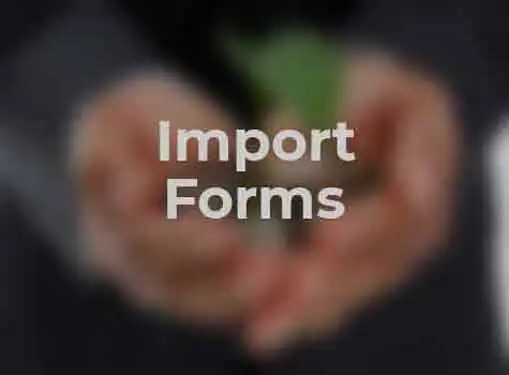Articles on Importing
Import Business Forms and Paperwork
An import business can be a great business model for ambitious entrepreneurs. But before you start placing orders, you'll need to get a handle on the avalanche of forms and paperwork that are standard operating procedure in importing.
Importing plays a vital role in today's global marketplace.

For entrepreneurs, importing is an attractive business option because it offers the potential for profit and unlimited growth opportunities. Even existing business owners find themselves drawn into the importing game as a way to achieve vertical integration.
But creating a successful import business model isn't as easy as it sounds. In addition to securing international suppliers and domestic buyers, importers are required to navigate a complex system of regulations and customs requirements. Freight forwarders and customs brokers facilitate the process, but ultimately import business owners themselves are responsible for the safe, efficient, and legal delivery of their merchandise.
One of the most daunting tasks for new importers is the successful completion of import forms and paperwork. In the U.S., imports are regulated by U.S. Customs & Border Protection (CBP). Reorganized after 9/11, this agency is primarily tasked with keeping unwanted shipments and people out of the country. But they are also responsible for overseeing much of the paperwork you will be required to complete as an importer, including the following documents and forms.
Customs Automated Commercial System (ACS)
To streamline the process, CBP has created the Customs Automated Commercial System (ACS). This is an electronic documentation process that reduces import time delays from days to hours or in some cases, minutes. Carriers, brokers, and importers are permitted to use the system, and it's something you'll need to become familiar with if you're serious about importing.
Importer Security Filing (ISF)
Recently, CBP has instituted a requirement for importers to file an ISF document at least 24 hours before shipments leave their country of origin. Also known as "10+2", this form is designed to "push out" U.S. borders so CBP can identify threatening cargo before it gets anywhere near the U.S.
Formal Entry vs. informal entry
Normal cargo with a value less than $2,000 may be excluded from formal import documentation requirements. All other imports are considered "formal entry" and require the following documentation:
- Entry manifest (Customs form 7533)
- Bill of lading or carrier certificate (as evidence of right to make entry)
- Commercial invoice
- Packing list
- Surety bond documentation
Share this article
Additional Resources for Entrepreneurs




Conversation Board
We greatly appreciate any advice you can provide on this topic. Please contribute your insights on this topic so others can benefit.